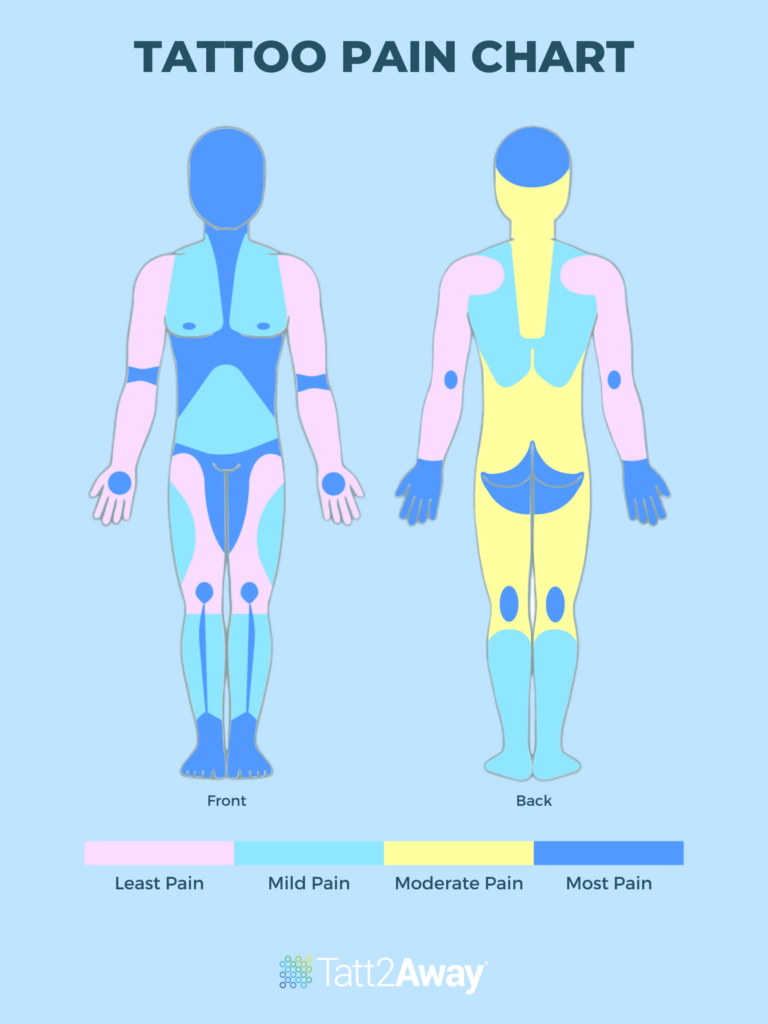When deciding where to get your first tattoo, the pain factor is often as crucial as the design itself. Whether you're envisioning a subtle symbol on your wrist or a full-back piece, understanding the varying pain levels across different body parts can guide your decision. Here’s the lowdown on what spots to consider and which ones might have you gritting your teeth.
Where It Hurts Least and Most Tattoo pain is subjective, but certain areas consistently rank as more or less painful. Generally, fleshier parts like the upper arms, thighs, and buttocks tend to be less painful because they have more muscle and fat padding, which can cushion the impact of the tattoo needle. Conversely, areas with less flesh and more bone or nerve endings—like the ribs, spine, and feet—tend to be more sensitive and, therefore, more painful.
Pain Nuances Across Common Tattoo Spots
- Upper Arms and Shoulders: These spots are considered among the least painful due to the presence of more muscle and fat. They can handle the tattoo needle without too much discomfort, making them ideal for first-timers.
- Forearms: A bit of a mixed bag; while they do have a decent amount of muscle, the presence of nerve endings can cause a medium level of pain. However, many find this area tolerable.
- Chest and Stomach: These areas can be tricky. The chest, especially near the collarbone and sternum, has thinner skin and less padding, making it moderately painful. The stomach varies more with body type; those with more body fat may experience less pain, but the area around the navel can be particularly sensitive.
- Lower Back and Buttocks: While the lower back can be sensitive near the spine, moving away from the spine reduces pain levels. The buttocks, having a lot of fatty tissue, generally endure tattooing quite well, although personal sensitivity can vary.
- Legs: The thighs are often less painful, especially the outer thigh, due to thicker skin and fewer nerve endings. The calves can be a different story; though they have a lot of muscle, the skin is tighter, which might increase pain sensations.
Choosing the Right Spot When choosing your tattoo location, consider not only the pain factor but also your lifestyle and the visibility of the tattoo. Some professions might require less visible tattoos, which could influence whether you opt for a forearm tattoo or something easily covered like on the upper arm or back.
Preparing and Managing Pain During the Tattoo Process
Before you ink up, preparing both physically and mentally can make a significant difference in your tattoo experience. Here's how you can prep for the session to manage pain better:
- Adequate Sleep: Ensure you get a good night's sleep before your tattoo appointment. Being well-rested helps you tolerate pain better and keeps your stress levels low.
- Hydration: Drink plenty of water before your session. Hydrated skin is healthier and may handle the tattoo needle more comfortably.
- Nutrition: Eat a healthy meal at least two hours before your appointment to keep your energy levels up and blood sugar stable; this can help you endure longer sessions with less discomfort.
- Music: Bring headphones and your favorite playlists. Listening to music can help distract you from the pain and make the time pass more quickly.
During the tattoo session, don't hesitate to communicate with your artist about any discomfort. They can offer breaks or adjust their technique to ease the pain. Remember, the goal is a beautiful tattoo and a positive experience, so taking these preparatory steps can be crucial.
Embrace the Experience Remember, a bit of pain is part of the tattoo journey. The discomfort is temporary, but the art you choose will be with you for a lifetime. Focus on the significance of your tattoo and the joy it will bring. Choose wisely, prepare properly, and embrace the experience as part of your unique story.
Whether you're gearing up for your first tattoo or considering another addition to your collection, understanding the nuances of tattoo pain can help you make informed decisions. And remember, aftercare is crucial, so consider investing in high-quality, all-natural aftercare products to ensure your new ink heals perfectly and retains its vibrancy. Check out our All-Natural Tattoo Aftercare products to keep your tattoo looking its best.
For a comprehensive look at managing tattoo pain and ensuring optimal healing, explore these additional resources Medical News Today, Skinsnneedles

